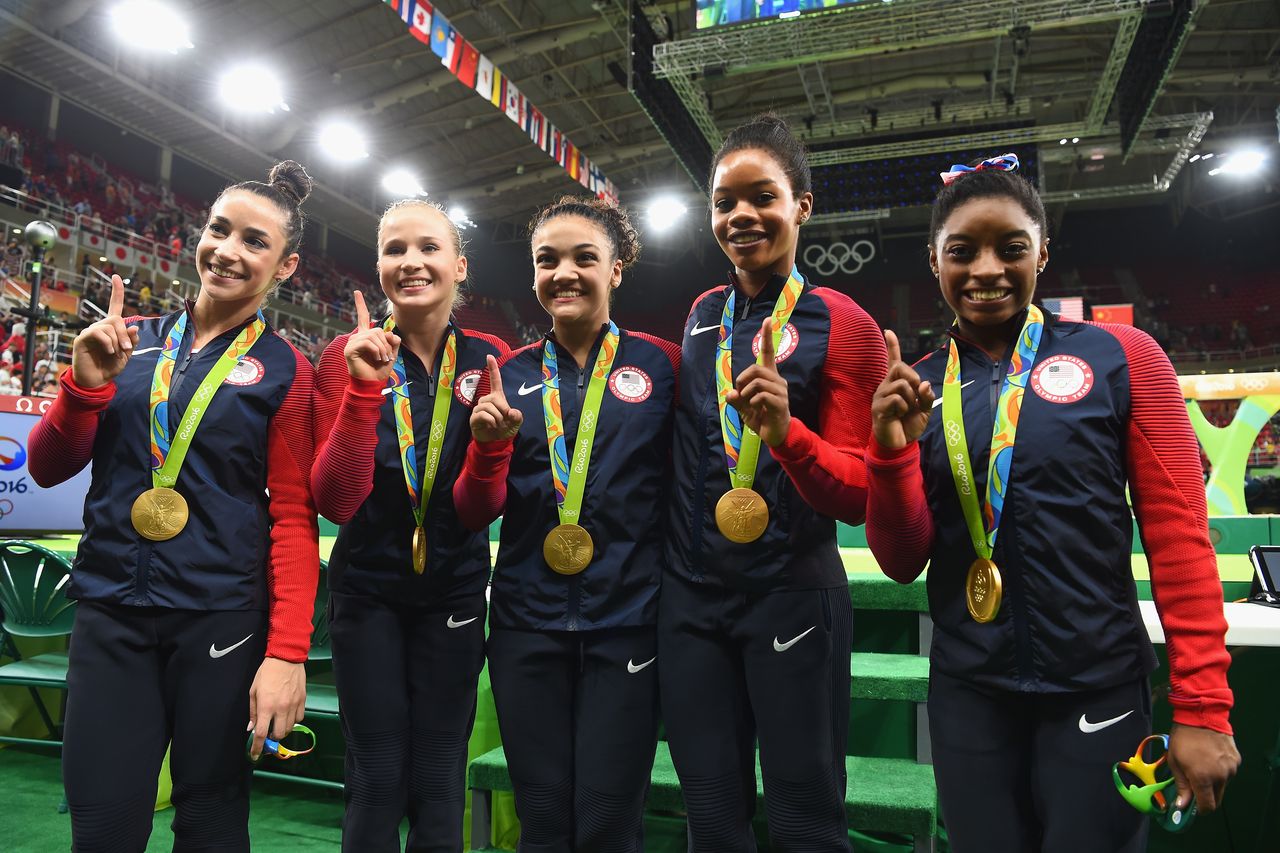
The 2016 Olympic women’s gymnastics team final wasn’t a competition, it was a clinic taught by Team USA. During Simone Biles’s floor routine, with the gold medal essentially clinched, you could see the Russian team — the Americans’ bitter rivals for the last few Olympics — watching Biles work her magic.
The US team should have handed out participation ribbons and charged a fee.
There was no drama. There was no excitement. There was no suspense.
Despite the presence of glitter, eye shadow, and elegance, the Olympics women’s gymnastics team final was a slaughter. Here’s how the US team did it.
Simone Biles was Simone Biles
There’s a point where you run out of words to describe Simone Biles’s dominance. The woman has not lost a team or all-around competition in three years. That’s three years with a target on your back. Three years where everyone dusts off their A-game to give you their best shot. Three years of people waiting for you to crack. Three years of competing against yourself because you’re your only true competition.
The highest compliment you can give Simone Biles is that she performed like Simone Biles. And Biles was every bit of herself during the team finals.
The US’s “weakest” event was better than any team’s strongest
The scouting report on the US team for the past couple of years has been that if any evidence exists to prove that they are mortal, it’s in the uneven bars. At the 2012 Olympic Games in London, Russia’s bevy of skilled bar routines and the US’s weakness in the event kept the team final interesting for a rotation or two.
In Rio, as the US headed to the bars for its second event rotation, it led over Russia by seven-tenths of a point (46.866 to 46.166). The US had already completed one of its core events, the vault, while Russia finished its best event, the bars.
The lead wasn’t that big.
For a brief moment, the competition threatened to get interesting. But Team USA’s two bars competitors — 2012 Olympic all-around champion Gabby Douglas, and bars specialist Madison Kocian — were having no part of that. Douglas and Kocian turned in two of the top three bars performances of the night.
Douglas earned a score of 15.766, the night’s second highest score in the event. Kocian earned a 15.933, tying Russia’s Aliya Mustafina for the highest score. Biles’s led off the event with a 14.800, giving the US a total of 46.499 on bars — the highest score of the night on bars, and the second highest team score on any apparatus in the competition, behind their own score on vault. Team USA actually scored higher on bars than it did on the floor (45.999), which is considered their strongest event.
Neither Kocian nor Douglas competed in any of the other events. But their contribution was enough to stretch Team USA’s lead over the competition to about four points — a gap that would only grow as the night progressed.

